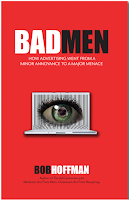The advertising industry is trying its best to shed itself of the one thing that made it valuable and interesting -- ideas -- and become as one with its clients.
Before I dig myself a hole here, let me say that there is an important place for numbers in advertising. As a former science teacher, I have a very large bias toward basing advertising decisions on facts.
However, in a large percentage of meetings I attend, facts are not used to enlighten. They are used to confuse or mislead. This is done in two ways:
1. Using data disingenuously.This has always been true to some degree in traditional advertising. It is alarmingly true in the world of digital advertising.
2. Using data without proper perspective.
The strategy often employed is to torture the facts until a piece of data that looks impressive on the surface can be squeezed out of it. Then it is presented out of context.
For example, while making a pitch for online display advertising, you will often hear a planner or digital media guru make a statement like this --
"According to Nielsen, 60% of people surveyed said they had clicked on a banner ad in the past 30 days."On the surface, this "fact" seems substantial. Then you realize how many thousands of ads are served each month to the average person, and how it only takes one click to get over this threshold. Here are some more things that are wrong with the above statement:
1. Who was surveyed? Unless you know who the sample is, the statement is meaningless. The statement says "people" were surveyed. What people? People online? People in Cupertino? People with unintended click disorder?
2. It is self-reported. Most self-reported data is nonsense. The only way to get a true number is to measure actual behavior.
3. It blatantly and intentionally disregards the key fact. The key fact about clicking is that only one served display ad in a thousand gets clicked on. Any discussion of display advertising click rates that does not start with this fact is intentionally deceitful.One of the key tricks of this type of deceit is the cynical use of mathematical terms instead of plain English. Ask the planner or online guru what the click-through rate is for Facebook ads and the answer you will get is "point-0-2." The purpose of answering this way is obfuscation. It is a lot less clear to say "point-0-2" than it is to say "2 in ten thousand."
Another disturbing part of the numbers-oriented presentations I see is the lack of perspective. Slide after slide of charts and graphs are shown without an ounce of perspective on what they mean. It reminds me of what the financial industry must have been like before the crash of 2008.
They had incomprehensibly complex formulas for derivatives and other financial instruments, and no idea at all what these numbers really meant or where the formulas lead.
Anyone foolish enough to think that our digital gurus understand more about their metrics than the PhD's on Wall Street knew about theirs, deserves everything he gets.




